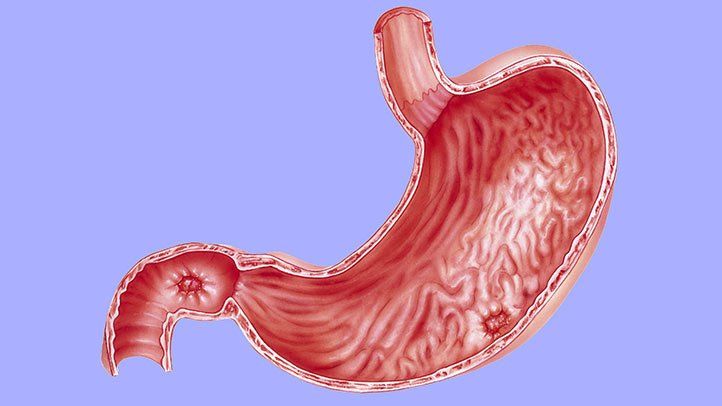Lactobacillus is a genus of gram-positive bacteria belonging to the bacilli class, lactobacillaceae family, and firmicutes phylum . It is generally non-sporulating, non respiring, and has a low Guanine-Cytosine content (low GC). They can be spherical or rod-shaped. This genus is distinguished by its ability to tolerate acid.
Lactobacillus is found in many habitats. It can coexist with our genitourinary, urinary, and digestive systems without any negative effects. Lactobacillus is also present in various fermented foods, including yogurt and dietary supplements.
Lactobacillus is taken orally to treat and prevent diarrhea, including infectious forms such rotaviral diarrhea in children and traveler’s diarrhea. It is additionally taken to both prevent and cure the diarrhea that using antibiotics causes.
Our bodies naturally contain a large number of bacteria and other microorganisms. Friendly bacteria like lactobacillus can assist us in digestion, nutrient absorption, and defense against potentially harmful “unfriendly” organisms that could result in illnesses like diarrhea.
Usages and Efficacy
It is likely effective for;
1. Children’s Virus-induced Diarrhea (Rotavirus)
Children receiving lactobacillus treatment for rotaviral diarrhea appear to recover from their illness about a half day sooner than they would without it. Lactobacillus is more effective in larger doses than in smaller ones. During the first 48 hours, at least 10 billion CFU (colony-forming unit) should be used.
2. Hay Fever
People with grass pollen allergies who don’t respond to the anti-allergy medicine loratadine can enhance their quality of life by roughly 18% by taking two billion colony-forming units of Lactobacillus paracasei daily for five weeks. Additionally, giving children with year-round allergies 10 billion colony-forming units of Lactobacillus johnsonii for 12 weeks seemed to alleviate their itchy eye symptoms.
3. Preventing Antibiotic-Induced Diarrhea
According to research, consuming probiotics that solely include Lactobacillus strains lowers the risk of diarrhea brought on by antibiotics. Additionally, administering lactobacillus GG (Culturelle) to children in addition to antibiotics appears to lessen diarrhea. Evidence regarding the effects of taking lactobacillus along with other probiotic strains is inconclusive.
4. Eczema (Atopic Dermatitis)
The majority of evidence points to the value of lactobacillus products in the treatment of eczema. Infants who are allergic to cow’s milk appear to experience fewer eczema symptoms when taking Lactobacillus GG. Children aged 1 to 13 years old who have eczema appear to benefit from taking Lactobacillus sakei, Lactobacillus plantarum, and a mix of freeze-dried Lactobacillus rhamnosus and Lactobacillus reuteri. However, it doesn’t appear that Lactobacillus paracasei is helpful for treating eczema.
There is conflicting evidence regarding Lactobacillus‘ potential to prevent eczema. According to several studies, taking Lactobacillus during pregnancy lowers the likelihood that your baby may have eczema. But other study indicates no advantage. This may be related to the lactobacillus strains employed and the newborns’ susceptibility to acquiring the skin disease. a circumstance that raises the possibility of experiencing allergic responses (atopic disease).
Only some lactobacillus strains appear to lower the risk, according to research, and consuming lactobacillus may help avoid the onset of atopic disease. A specific strain of Lactobacillus rhamnosus called lactobacillus GG (Culturelle), when taken orally during the first three to six months of breastfeeding, appears to protect babies with a family history of atopic disorder from developing asthma, allergic rhinitis, and eczema. Other strains, however, do not appear to have the same impact.
5. Treating Bacterial Vaginal Infections (Bacterial Vaginosis)
According to clinical studies, using certain Lactobacillus strains inside the vagina may help treat bacterial vaginosis. Researchers have discovered that vaginal pills (Gynoflor, Medinova, Switzerland) and suppositories (Vivag, Pharma Vinci A/S, Denmark) containing Lactobacillus acidophilus may be useful.
Additionally, researchers have discovered that vaginal capsules containing Lactobacillus gasseri and Lactobacillus rhamnosus, such as EcoVag Vaginal Capsules from Bifodan A/S in Denmark, can prolong the intervals between infections. Consuming yogurt with Lactobacillus acidophilus can perhaps stop these infections from happening again.
6. Preventing Diarrhea induced by Chemotherapy
5-fluorouracil, a chemotherapy medication, can have gastrointestinal (GI) adverse effects including severe diarrhea. There is some evidence that those who take a specific strain of Lactobacillus rhamnosus, lactobacillus GG, experience less severe diarrhea, less stomach discomfort, shorter hospital stays, and require fewer dose reductions of chemotherapy due to GI side effects (Culturelle).
7. Diarrhea
When infants and kids between the ages of 1 and 36 months are admitted to the hospital, giving them a specific strain of Lactobacillus rhamnosus called lactobacillus GG (Culturelle) appears to lower the chance of getting diarrhea. Additionally, in children who are malnourished, lactobacillus GG can lower the risk of diarrhea from any source.
However, lactobacillus GG did not appear to shorten the length of time otherwise healthy children experience diarrhea, indicating that it may only help avoid the condition. According to certain studies, ingesting a specific product (DanActive, Dannon) containing Lactobacillus casei may help avoid diarrhea in kids. However, additional research reveals no prevention effect. When children are hospitalized with diarrhea, a special product with Lactobacillus reuteri (BioGaia drops, BioGaia AB, Sweden) appears to help shorten the length of the diarrhea.

8. Infection with Helicobacter pylori (H. pylori)
According to research, taking lactobacillus combined with the “triple therapy” regimen of clarithromycin, amoxicillin, and a proton-pump inhibitor may help heal stomach ulcers brought on by the H. pylori . When used with other “triple therapies,” an antibiotic alone, other “quadruple therapies,” or a “quadruple therapy” that also contains bismuth, it does not appear to help treat the illness.

9. Elevated Cholesterol
Low-density lipoprotein (LDL or “bad”) cholesterol in individuals with high cholesterol appears to be reduced by roughly 9 percent to 12 percent by consuming yogurt or taking capsules containing the lactobacillus strain L. reuteri. Additionally, ingesting Lactobacillus plantarum appears to lower total cholesterol levels by 14% in people with high cholesterol who are adults. But high-density lipoprotein does not appear to be improved by lactobacillus.
10. Acne
Acne may be improved by combining oral antibiotics with lactobacillus and other probiotics. Early research shows that taking a specific product containing Lactobacillus acidophilus, Lactobacillus bulgaricus, and Bifidobacterium bifidum twice daily along with minocycline once daily in the evening for 12 weeks improves acne.
11. Common Cold
Early research suggests that taking Lactobacillus plantarum and Lactobacillus paracasei daily for 12 weeks might reduce the risk of common cold by about 12% and reduce the number of days with symptoms from 8.6 to 6.2 in adults. Also, taking a combination of Lactobacillus acidophilus and Bifodobacterium for 3 months seems to reduce school absences due to cold symptoms. However, research is inconsistent.
Warning and Special Precautions
- Children: When taken by mouth properly, Lactobacillus is likely safe for kids. A specific strain of Lactobacillus rhamnosus called lactobacillus GG has been used safely for periods ranging from five days to 15 months.
- Pregnant women and Nursing mothers: lactobacillus is possibly safe when taken by mouth in the proper manner during pregnancy and when breast-feeding. It has been shown safe for pregnant and nursing women to take lactobacillus GG. From two months before to delivery until the breastfed child was two months old, combinations of Lactobacillus rhamnosus or Lactobacillus paracasei with Bifidobacterium longum have been used safely. The safety of other varieties of lactobacillus, however, has not been investigated during pregnancy and breast-feeding.
- Digestive surgery following a colonoscopy: There is some worry that consuming yogurt containing lactobacillus could result in a bacterial infection. Before having a colonoscopy or having intestinal surgery, stop taking probiotics.
- Immune system impaired: There is some worry that lactobacillus from dietary supplements that include live bacteria may grow excessively well in those with immune system compromised. This includes those who have HIV/AIDS or who have received medications to stop the rejection of an organ transplant. Infrequently, lactobacillus has led to illness in patients with compromised immune systems. If you want to be on the safe side, consult your doctor before taking lactobacillus if you have a compromised immune system.
Species of Lactobacillus
There are about 170 legitimately reported species and 17 subspecies of Lactobacillus, all of which have a strong reputation in nomenclature .Some of the most popular species are Acidophilus, Acidophilus Bifidus, Acidophilus Lactobacillus, L. Acidophilus, L. Amylovorus, L. Brevis, L. Bulgaricus, L. Casei, L. Casei Immunitas, L. Crispatus, L. Delbrueckii, L. Fermentum, L. Gallinarum, L. Helveticus, L. Johnsonii, L. Johnsonii LC-1, L. Lactis, L. Plantarum, L. Reuteri, L. Rhamnosus, L. Salivarius, Lacto Bacillus, Lactobacille, Lactobacilli, Lactobacilli Acidophilus, Lactobacilli Bulgaricus, Lactobacilli Plantarum, Lactobacilli Rhamnosus, Lactobacilli Salivarium,Lactobacillus acidophilus, Lactobacillus amylovorus, Lactobacillus brevis, Lactobacillus bulgaricus, Lactobacillus casei, Lactobacillus casei sp. rhamnosus, Lactobacillus crispatus, Lactobacillus delbrueckii, Lactobacillus delbrueckii ssp. bulgaricus, Lactobacillus fermentum, Lactobacillus gallinarum, Lactobacillus Gasseri, Lactobacillus GG, Lactobacillus Helveticus, Lactobacillus johnsonii, Lactobacillus Lactis, Lactobacillus Paracasei, Lactobacillus plantarum, Lactobacillus reuteri, Lactobacillus Rhamnosus GG, Lactobacillus rhamnosus, Lactobacillus sakei, Lactobacillus Salivarium, Lactobacillus salivarius, Lactobacilo, Lactospores.
Role of Lactobacillus in Fermentation.
It participates in fermentation as a lactic acid bacterium (LAB). It is used to initiate the malolactic fermentation that produces wine. Lactic malic acid (dicarboxylic acid) is converted to lactic acid (monocarboxylic acid) during malolactic fermentation.
Because of the malolactic and malic enzymes’ presence, the malic acids are broken down, which raises the pH levels and alters the wine’s flavor. Therefore, the bacteria contribute to the beginning of the wine-making process and to the wine’s aroma.
The Role of Lactobacillus in Female Reproductive System.
The functions of lactobacillus also extends to protection of the female genital organ; the vagina. Vaginal lactobacilli protects the female genital tract by producing lactic acid responsible for low vaginal pH that inhibits sexually transmitted pathogens.
Consumption of antibiotics can lead to destruction of these bacteria which leads to imbalance and finally yeast infection, however consumption of antibiotics with probiotics can avoid such situation. But in all cases consult your medical doctor to avoid abuse of antibiotics. Finally, Consumption of fermented milk and other fermented food items will help you get the lactobacillus benefits.
